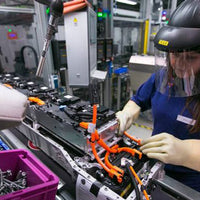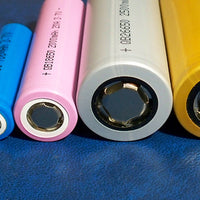New energy vehicles currently have two mainstream battery technology routes, lithium iron phosphate batteries, and ternary lithium batteries
Although the two batteries compete in many application areas, competition in the field of new energy vehicles is mainline, because this is the nation's largest lithium battery application scenario, since want to competition, there must be compared, battery performance compared with the price of the car can be carried out, and from the performance comparison of the ternary lithium battery and lithium iron phosphate batteries which good, is by setting the conditions, it is concluded that the actual data of the two kinds of battery is clear. According to the experiments conducted by relevant laboratories, new energy automobile manufacturers, and power battery manufacturers, although the tests of each house inevitably have slight differences in specific parameters, the judgment on the performance of the two batteries tends to be the same. For this reason, we take representative parameters for comparison.
1. BYD for the bus and Tesla for the car. That's the difference in volume. From the current technology, the energy density of the ternary lithium battery is generally at 200Wh/kg and may reach 300Wh/kg in the future. However, lithium iron phosphate batteries are currently hovering around 100~110Wh/kg, and some can reach 130~150Wh/kg, but it is very difficult to break through 200Wh/kg. So ternary power batteries can provide twice as much space as lithium iron phosphate, which is important for cars with limited space. Tesla produces three lithium batteries, and BYD produces lithium iron phosphate batteries, so "buses choose BYD, cars choose Tesla," said.
2. Similarly, due to its high energy density and much smaller weight, the lightweight and small space occupancy determine that ternary lithium battery new-energy vehicles consume less power, thus having faster speed and stronger endurance. Therefore, cars can run farther with ternary lithium batteries, while lithium iron phosphate new energy vehicles are still used for city buses at present, because a range is not far, there needs to be a charging pile within a short distance to charge.
3. Of course, lithium iron phosphate batteries are essential for bus safety. There have been more than one-tesla car fire accident. The reason is that the battery pack Tesla is composed of about 7,000 18650 ternary lithium batteries. If there is an internal short circuit in the battery of these units or the whole battery pack, an open fire will be generated. And the material of lithium iron phosphate encountered short circuit will not burn, and high-temperature resistance performance is much better than three lithium batteries.
4. Although lithium iron phosphate battery is high temperature resistant, the ternary lithium battery's low-temperature resistant performance is better, is a major technical route, the manufacture of lithium-ion batteries at low temperature at minus 20 ° C, the ternary lithium battery can release 70.14% of capacity, and lithium iron phosphate batteries can only release the 54.94% capacity, and due to the low-temperature condition, the ternary lithium battery discharge platform is much higher than the lithium iron phosphate battery voltage platform startup faster.
5. Charging efficiency, the triple lithium battery is higher. The lithium battery is charged by the current limiting voltage method, that is, constant current charging is done in the first stage, where the current is large and efficiency is high. After constant current charging reaches a certain voltage, it enters the second stage of constant voltage charging. At this time, the current is small and the efficiency is low. Therefore, to measure the charging efficiency of the two, the ratio between the constant current charging capacity and the total battery capacity is called the constant current ratio. The experimental data show that the difference between the two is not significant when charging under 10C, but the distance will be separated when charging above 10C. When charging at 20C, the constant current ratio of ternary lithium battery is 52.75%, and that of lithium iron phosphate battery is 10.08%, the former is 5 times the latter.
6. In terms of cycle life, lithium iron phosphate batteries are better than ternary lithium batteries. The theoretical life of ternary lithium batteries is 2000 times, but basically, the capacity decays to 60% after 1000 cycles. Even tesla, the best brand in the industry, can only maintain 70% power after 3,000 cycles, while the lithium iron phosphate battery still has 80% capacity after the same cycle.
The comparison of the above six aspects can roughly get the comparative advantages of the two are helpful to answer the better question: lithium iron phosphate battery is safe, has a long life, and can withstand high temperature; Ternary lithium batteries are light in weight, high in charging efficiency and low-temperature resistance, so their adaptability to different conditions and places is the reason for the coexistence of the two.








0 comments